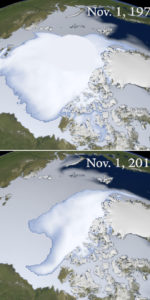
HOUSTON — On Feb. 29, NASA successfully conducted another drop test of the Orion crew vehicle’s entry, descent and landing parachutes high above the Arizona desert in preparation for the vehicle’s orbital flight test in 2014. Orion will carry astronauts deeper into space than ever before, provide emergency abort capability, sustain the crew during space travel and ensure a safe re-entry and landing.
An Air Force C-17 plane dropped a test version of Orion from an altitude of 25,000 feet above the U.S. Army’s Yuma Proving Grounds in Arizona. Orion’s drogue chutes were deployed between 15,000 and 20,000 feet, followed by the pilot parachutes, which deployed the main landing parachutes. Orion landed on the desert floor at a speed of almost 17 mph, well below the maximum designed touchdown speed of the spacecraft.
The test examined how Orion’s wake, the disturbance of the air flow behind the vehicle, would affect the performance of the parachute system. Parachutes perform optimally in smooth air that allows proper lift. A wake of choppy air can reduce parachute inflation. The test was the first to create a wake mimicking the full-size Orion vehicle and complete system.

Since 2007, the Orion program has conducted a vigorous parachute air and ground test program and provided the chutes for NASA’s successful pad abort test in 2010. All of the tests build an understanding of the chutes’ technical performance for eventual human-rated certification.
For more information about Orion and photographs of the drop test, visit:
Missions » ISS »




